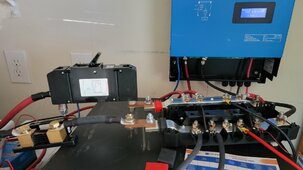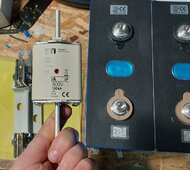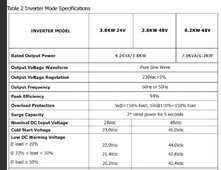I've been looking for a suitable DC circuit breaker for 400A 60V (for my 48 16S 280AH LFP battery) and I'm having a hard time finding a suitable one at a reasonable price in Europe (Poland, but the market for electrical parts is very similar in most of the EU). What is reasonable for me regarding a price? About $100 I'd say is fine. I can live with maybe 50% more, but asking $500+ for a circuit breaker is taking the piss.
I've asked the inverter seller (Easun SMH-ii-7k) if the negative battery terminal can be grounded. If so, I can just use a single pole breaker rather than 2.
There are these relatively inexpensive circuit breakers from Nanque Electric Store on Aliexpress, but it doesn't insipre confidence a 400A rated unit can only be fitted with 70mm2 wire (AWG 1) tops as I'm using 120mm2 (AWG 0/4) for all my battery connections.
So what do people in Europe buy for a circuit breaker? Or maybe it makes some sense to import from other parts of the world? In such case, what circuit breakers for 400A do people in the US, or elsewhere use? I read bussman makes good breakers in the US, but I haven't managed to find a 400A unit.
How did I decide I need 400A and not, lets say 200A for a 7kW inverter? My BMS is rated for continous 200A, 350A peak so it makes sense to have a breaker of last resort at 400A. Also, it seems a rule to size the breaker for twice the max expected continous load. Therefore 400A. If I've got it wrong, please let me know.
I can switch the battery off and on using the bluetooth app, and the fuse would probably meet the local electric code requirements. But I'd feel much better having a circuit breaker that can be reset instead.
I've asked the inverter seller (Easun SMH-ii-7k) if the negative battery terminal can be grounded. If so, I can just use a single pole breaker rather than 2.
There are these relatively inexpensive circuit breakers from Nanque Electric Store on Aliexpress, but it doesn't insipre confidence a 400A rated unit can only be fitted with 70mm2 wire (AWG 1) tops as I'm using 120mm2 (AWG 0/4) for all my battery connections.
So what do people in Europe buy for a circuit breaker? Or maybe it makes some sense to import from other parts of the world? In such case, what circuit breakers for 400A do people in the US, or elsewhere use? I read bussman makes good breakers in the US, but I haven't managed to find a 400A unit.
How did I decide I need 400A and not, lets say 200A for a 7kW inverter? My BMS is rated for continous 200A, 350A peak so it makes sense to have a breaker of last resort at 400A. Also, it seems a rule to size the breaker for twice the max expected continous load. Therefore 400A. If I've got it wrong, please let me know.
I can switch the battery off and on using the bluetooth app, and the fuse would probably meet the local electric code requirements. But I'd feel much better having a circuit breaker that can be reset instead.







